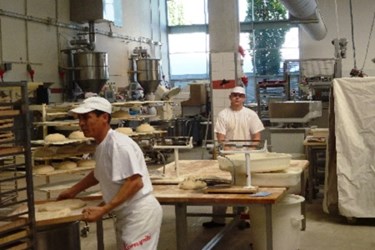Bakers Are Benefitting From Sanitary Equipment Design
By Isaac Fletcher, contributing writer, Food Online

Throughout the food manufacturing industry, food safety is a top priority, and in order to enhance safety in their operations, baking companies are exploring sanitary equipment design solutions borrowed from the meat and poultry sectors.
With the upcoming regulatory changes to food safety that will be brought about by FSMA, food manufacturers are looking for ways to update their operations. In many cases, food safety benefits from collaboration and the sharing of ideas across industry sectors. To ensure that they are adequately prepared for a new regulatory environment, many members of the baking industry have begun taking food safety cues from the meat and poultry industries that are subject to much stricter safety standards under the USDA.
Up until recently, manufacturers of baked goods were able to rely on ovens as the kill step. However, along with FSMA, come questions of whether the oven is actually effective enough in eliminating bacteria and other pathogens. Until this question can be answered with a resounding yes, bakers need to closely examine every element of production with food safety in mind.
In any food production operation, sanitary equipment design can go a long way toward reducing the spread of contaminants and improving food safety. Baking operations are no exception, and baking companies should consider investing in sanitary equipment in order to bring their food safety measures in line with new standards. In particular, conveyors are one type of equipment that can be used across industry sectors to deliver improved safety.
Related: Sanitary Mixer Design: Factors To Improve Productivity & Decrease Costs
Some baking companies are exploring the use of conveyors designed for the meat and poultry industries to meet USDA standards. Since operations that deal with meat and poultry face a huge number of safety issues on a regular basis, baking companies can leverage sanitary equipment design to create a safer environment for their own operations. Regardless of the type of products a baking company is making, it can find benefit in exploring sanitary equipment options, and the food industry is seeing a progression in sanitary conveyor designs from meat to baking.
In some cases, equipment manufacturers that have historically designed and produced products for the meat and poultry sectors are extending their customer base to provide customized equipment for manufacturers of baked goods. Some key sanitary design elements include welded frames to minimize bolted connections, closed tubes, and other nooks and crannies that are vulnerable to microbial contaminants.
Baking operations can be messy, and properly cleaning all food remnants out of all cracks and crevices can take a significant amount of time. A design that minimizes these areas can cut cleaning times and promote a safer production environment, which will become increasingly important as more FSMA regulations come into practice.
